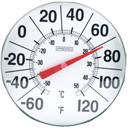Many people come to our nursery asking for suggestions of which unusual fruit trees are suitable for their location. These people come from a variety of Southern California climate types-inland areas, intermediate areas and coastal areas.
To respond to their questions we have developed three groupings of rare fruit trees according to their tolerance of low overnight temperatures that are likely to occur in the winter months: (A) cold winter areas (24°F) – low- lying spots, foothills, inland valleys; (B) cool winter areas (27°F) – intermediate distance from the ocean, some cold air drainage; (C) mild winter areas (30°F) – south facing, good air drainage, strong marine influence.
The assignment to each of the three categories was based on both personal growing experience accrued over 18 years as well as published minimum temperature tolerances. The trees are assumed to be over five years old; younger trees are generally 3-4°F more sensitive to frost damage.
To use the lists you must first decide which category best fits your location. You can consult the climate guide found in Sunset’s new Western Garden Book. Check around the neighborhood to see if ‘Hass’ avocados grow ( B & C categories). Buy a high/low thermometer and locate it 4 feet off the ground in the shade. Also a good indication of the severity of a frost can be inferred by checking the thickness of the ice that forms on the surface of a pail of water left out overnight. In the freeze of ’90-’91 I had a half-inch cap of ice form in a five gallon pail of water, and I registered a low of 29°F. The ice thickness also depends on cold duration, and that night we hit 32° at 6p.m. Brrr!
If you are in a cold winter area, you make choices only from that list. However, if you are in the mild winter category you can make choices from all three lists. The only caveat is to be aware that some trees, like apples, pears, kiwi and pistachio, must be “low-chill” types.
A growing number of determined enthusiasts succeed in fruiting tender fruit trees in very cold locations. They usually grow them in movable containers that are brought in during cold spells. For other ideas to protect your fruit trees from cold damage, you can refer to the previous article titled “Back Yard Frost Protection.”
_
A. Cold Winter Areas (24°F Minimums)
- Jujube (Zizyphus jujuba)
- Kiwi (Actinidia deliciosa)
- Asian Pear (Pyrus serotina)
- Loquat (Eriobotrya japonica)
- Sweet Pomegranate (Punica granatum)
- Pawpaw (Asimina triloba)
- Carob (Ceratonia siliqua )
- Jelly Palm (Butia capitata)
- Unusual Figs (Ficus carica)
- Unusual Apples (Malus sp)
- Persian Mulberry (Morus nigra)
- Capulin Cherry (Prunus salicifolia)
- Cherry of the Rio Grande (Eugenia aggregata)
- Raisin Tree (Hovenia dulcis)
- Kei Apple (Dovyalis caffra)
- Feijoa (Feijoa sellowiana)
- Cheh/Chinese Mulberry (Cudrania tricuspidata)
- Bay Leaf (Laurus nobilis)
- Kumquat (Fortunella margarita)
- Southern Blueberries (Vaccinium sp)
- Caper Bush (Capparis spinosa)
- Pistachio Nut (Pistacia vera)
- Mandarin Orange (Citrus reticulata)
_
B. Cool Winter Areas (27°F Minimums)
- Surinam Cherry (Eugenia uniflora)
- Pitahaya (Hylocereus undatus)
- Lychee (Litchi chinensis)
- Longan (Euphoria longan)
- White Sapote (Casimiroa edulis)
- Yellow Sapote (Casimiroa tetrameria)
- Strawberry Guava (Psidium littorale)
- Jaboticaba (Myrciaria cauliflora)
- Yellow Jaboticaba (Myrciaria glomirata)
- Tropical Guava (Psidium guajava)
- Grumichama (Eugenia brasiliensis)
- Wampee (Clausena lansium)
- Purple Passionfruit (Passiflora edulis)
- Macadamia Nut (Macadamia integrifolia)
- Cherimoya (Annona cherimola)
- Cold-tolerant Bananas (Musa balbisiana)
- Lucuma (Pouteria obovata)
- Allspice (Pimenta dioica)
- Curry Leaf (Murraya koenigii)
- Blood Orange (Citrus sinensis)
- Cape Gooseberry (Physalis peruviana)
- Sweet Lemon (Citrus limetta)
- ‘Oro Blanco’ Grapefruit (Citrus grandis x C. paradisi)
- Pummelo (Citrus grandis)
- Jambolan (Syzygium cumini)
- Sapodilla (Manilkara zapota)
_
C. Mild Winter Areas (30°F Minimums)
- Pineapple (Ananas comosus)
- Black Sapote (Diospyros digyna)
- Malabar Chestnut (Bombax glabra)
- Sugar Apple (Annona squamosa)
- Wax Jambu (Syzygium samarangense)
- Rose Apple (Eugenia jambos)
- Mango (Mangifera indica)
- Green Sapote (Pouteria viride)
- Cold-sensitive Bananas (Musa acuminata)
- Coffee (Coffea arabica)
- Babaco Papaya (Carica pentagona)
- Tropical Papaya (Carica papaya)
- Acerola/Barbados Cherry (Malpighia glabra)
- Pitomba (Eugenia luschnathiana)
- Tree Tomato (Cyphomandra betacea)
- Canistel/Eggfruit (Pouteria campechiana)
- Carambola/Starfruit (Averrhoa carambola)
- Miracle Fruit (Synsepalum dulcificum)
- Ice Cream Bean (Inga feuillii)
- Pepino Dulce (Solanum muricatum)
- Star Apple/Caimito (Pouteria caimito)
- Mamey Sapote (Pouteria sapota)
- Cinnamon (Cinnamomum zeylanicum)
- Jakfruit (Artocarpus heterophyllus)
- Yellow Pitahaya (Selenocereus megalanthus)
___________________________________________________________
David and Tina Silber, long-time members of CRFG (California Rare Fruit Growers) and founders of Papaya Tree Nursery in Granada Hills, Calif. are frequent contributors to the FRUIT GARDENER.
Tags: chill hours, climate, frost, horiculture, microclimate


